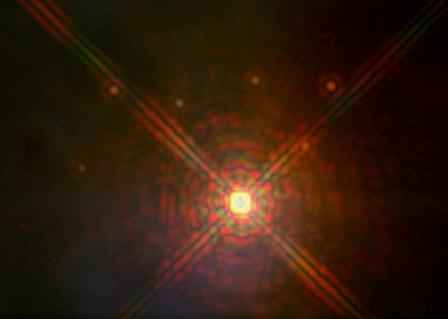So how far away is NGC 2264 IRS from the Cone Nebula?
In the picture above you can see the Cone Nebula, and then above it a bright blue star, and then above the star a gray area. That gray area corresponds to the position of NGC 2264 IR.
Is that far?
NASA wrote:
The entire (Cone) nebula is 7 light years in length.
So if we assume that NGC 2264 IR is located perfectly above the Cone Nebula, and not in the foreground or in the background, then the distance between the top of the Cone nebula and NGC 2264 IR should be less than 4 light-years. I think that a massive star can influence its surroundings for a much greater distance than that.
But I'm not convinced that a star that is still inside its own birth nebula is powerful enough to sculpt the Cone Nebula on its own. There is another suspect a bit farther away:
Cone Nebula and NGC 2264 wide field.
Credit: Graem Lourens.
Take a look at picture of the Cone Nebula and Christmas Tree region by Graem Lourens. All the red nebulosity in that picture is being ionized by the central star, 15 Mon, a hot O-type star of spectral class O7.
The distance between 15 Mon and the Cone Nebula is perhaps 30 light-years. I find it not at all unreasonable that a hot O-type star can ionize gas and sculpt nebulas over that sort of distance.
Now take a look at the low, rounded "pillar" on the
other side of 15 Mon. To me it is obvious that this "pillar" is being sculpted by 15 Mon. And if that thing is being sculpted by 15 Mon, why shouldn't the Cone Nebula be, too?
There are more relatively hot stars and a lot of starforming activity close to the Cone Nebula than there are close to the opposite "pillar". So in all probability, other sources of ultraviolet light and stellar winds are also playing a part in sculpting the Cone Nebula.
But 15 Mon is doing its part too, I'm sure.
Ann
 NGC 2264: The Cone Nebula
NGC 2264: The Cone Nebula






